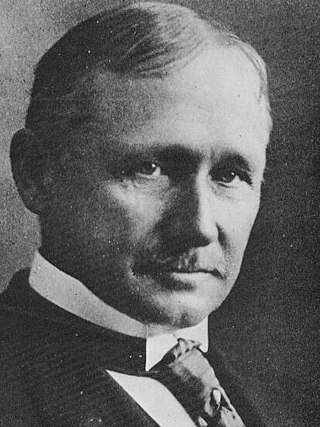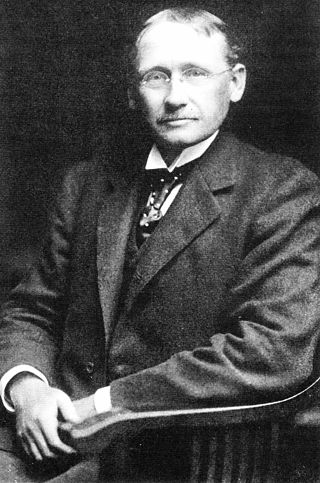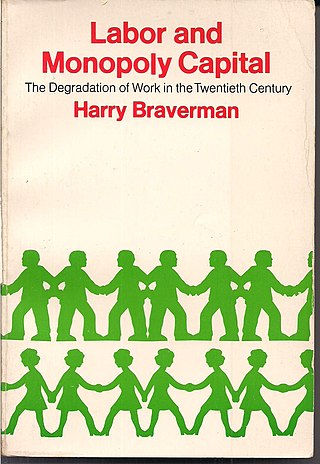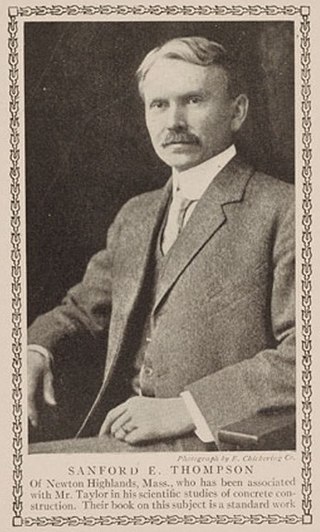
Frederick Winslow Taylor was an American mechanical engineer. He was widely known for his methods to improve industrial efficiency. He was one of the first management consultants. In 1909, Taylor summed up his efficiency techniques in his book The Principles of Scientific Management which, in 2001, Fellows of the Academy of Management voted the most influential management book of the twentieth century. His pioneering work in applying engineering principles to the work done on the factory floor was instrumental in the creation and development of the branch of engineering that is now known as industrial engineering. Taylor made his name, and was most proud of his work, in scientific management; however, he made his fortune patenting steel-process improvements. As a result, scientific management is sometimes referred to as Taylorism.

Scientific management is a theory of management that analyzes and synthesizes workflows. Its main objective is improving economic efficiency, especially labor productivity. It was one of the earliest attempts to apply science to the engineering of processes to management. Scientific management is sometimes known as Taylorism after its pioneer, Frederick Winslow Taylor.
The Henry Laurence Gantt Medal was established in 1929 by the American Management Association and the Management section of the American Society of Mechanical Engineers for "distinguished achievement in management and service to the community" in honour of Henry Laurence Gantt. By the year 1984 in total 45 medals had been awarded.

Frank Bunker Gilbreth was an American engineer, consultant, and author known as an early advocate of scientific management and a pioneer of time and motion study, and is perhaps best known as the father and central figure of Cheaper by the Dozen.

A time and motion study is a business efficiency technique combining the Time Study work of Frederick Winslow Taylor with the Motion Study work of Frank and Lillian Gilbreth. It is a major part of scientific management (Taylorism). After its first introduction, time study developed in the direction of establishing standard times, while motion study evolved into a technique for improving work methods. The two techniques became integrated and refined into a widely accepted method applicable to the improvement and upgrading of work systems. This integrated approach to work system improvement is known as methods engineering and it is applied today to industrial as well as service organizations, including banks, schools and hospitals.

Lyndall Fownes Urwick was a British management consultant and business thinker. He is recognised for integrating the ideas of earlier theorists like Henri Fayol into a comprehensive theory of management administration. He wrote an influential book called The Elements of Business Administration, published in 1943. With Luther Gulick, he founded the academic journal Administrative Science Quarterly.
Oliver Sheldon (1894–1951) was a director of the Rowntree's in York, England. He wrote on principles of public and business administration in the 1920s.
The efficiency movement was a major movement in the United States, Britain and other industrial nations in the early 20th century that sought to identify and eliminate waste in all areas of the economy and society, and to develop and implement best practices. The concept covered mechanical, economic, social, and personal improvement. The quest for efficiency promised effective, dynamic management rewarded by growth.
William Henry Leffingwell was an American organizational theorist, president of W. H. Leffingwell, Inc., New Jersey, management author, and the founder of National Office Management Association.

Charles Eugène Bedaux was a French-American millionaire who made his fortune developing and implementing the work measurement aspect of scientific management, notably the Bedaux System. Bedaux was friends with British royalty and Nazis alike, and was a management consultant, big game hunter and explorer. In 1934, he was the fifth wealthiest man in the United States.
Edward Francis Leopold Brech was a British management consultant, and author of management theory and practice books, known for his work on the history of management.

Labor and Monopoly Capital: The Degradation of Work in the Twentieth Century is a book about the economics and sociology of work under monopoly capitalism by the political economist Harry Braverman. Building on Monopoly Capital by Paul A. Baran and Paul Sweezy, it was first published in 1974 by Monthly Review Press.
The Bedaux Unit emerged from the U.S. scientific management movement. It remains in daily use in measuring and comparing manual labor to this day.

Sanford Eleazer Thompson (1867–1949) was an American engineer and consultant to the U.S. government and private sector. He is considered one of the key figures of the American scientific management movement, which emerged in the progressive era.

Harlow Stafford Person was an American economist, Professor of Management and first Dean at the Amos Tuck School of Business, and later secretary and key figure in the Taylor Society.
The Wallace Clark Award or Wallace Clark Medal is a former management award for Distinguished Contribution to Scientific Management, named after Henry Wallace Clark (1880-1948). The Wallace Clark Award was established in 1949 and was sponsored by the American Management Association (AMA), the American Society of Mechanical Engineers (ASME), the Association for Consulting Management Engineers and the Society for the Advancement of Management.

The Society for the Advancement of Management, commonly known as SAM, is the oldest among professional management societies. On November 11, 1910 colleagues of Frederick W. Taylor met at the New York Athletic Club to discuss and promote the principles of 'scientific management'.
Richard Albert Feiss was an American lawyer, business manager, and president of Joseph & Feiss Co. in Cleveland, Ohio. He is known as 6th president of the Taylor Society from 1922 to 1924.

The Taylor Key Award is one of the highest awards of the Society for Advancement of Management. This management awards is awarded annually to one or more persons for "the outstanding contribution to the advancement of the art and science of management as conceived by Frederick W. Taylor."











